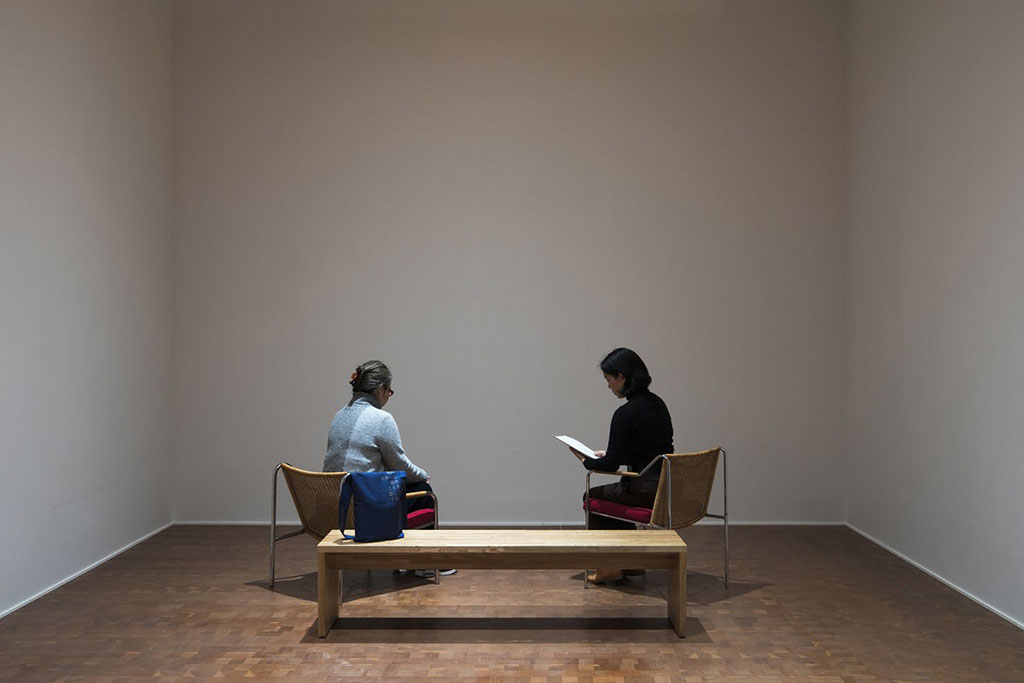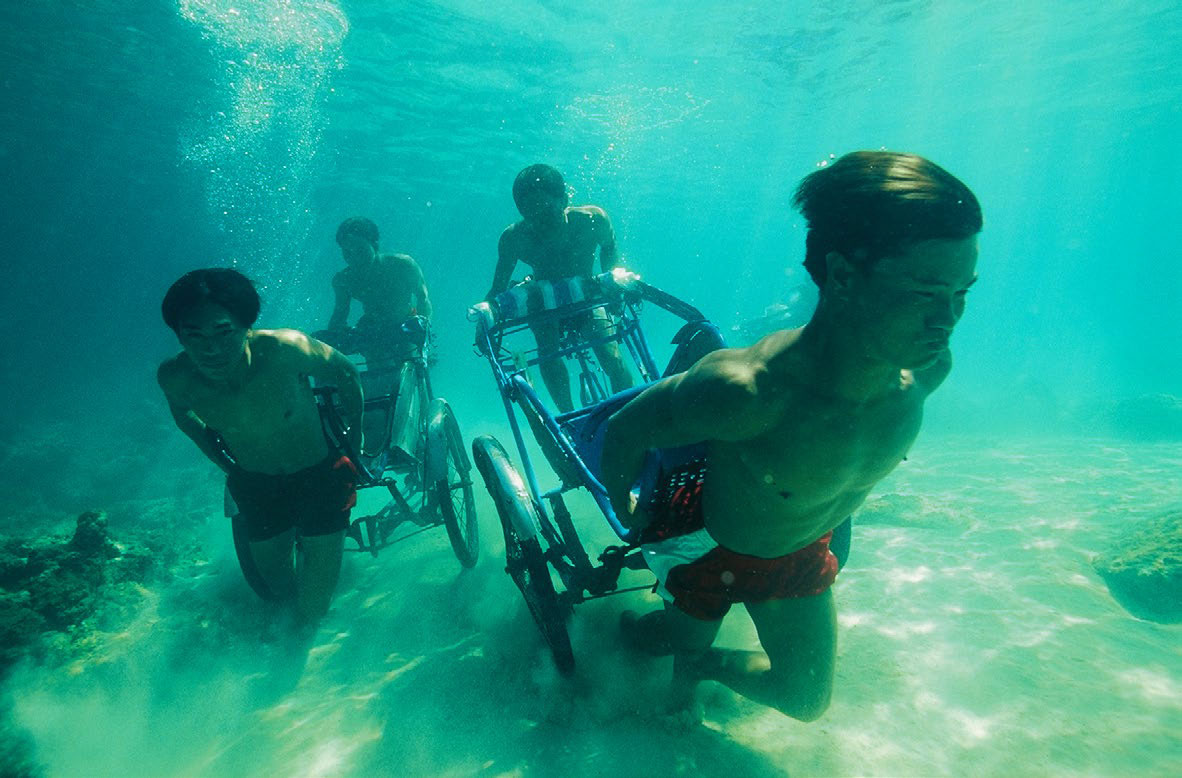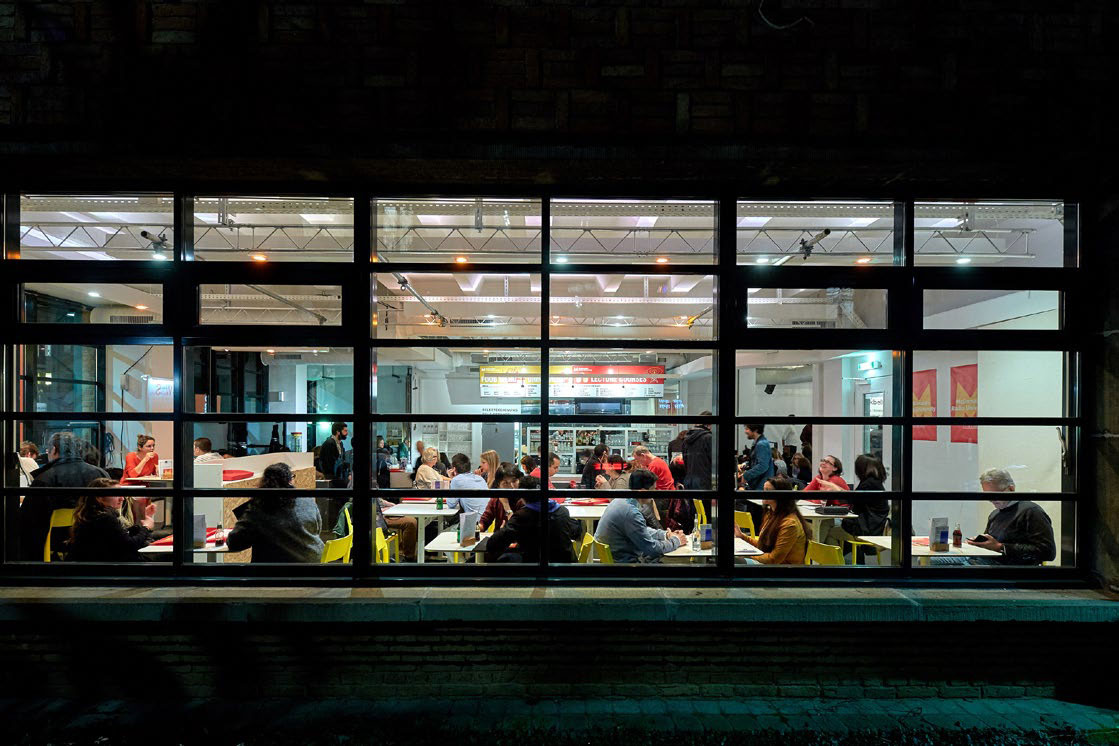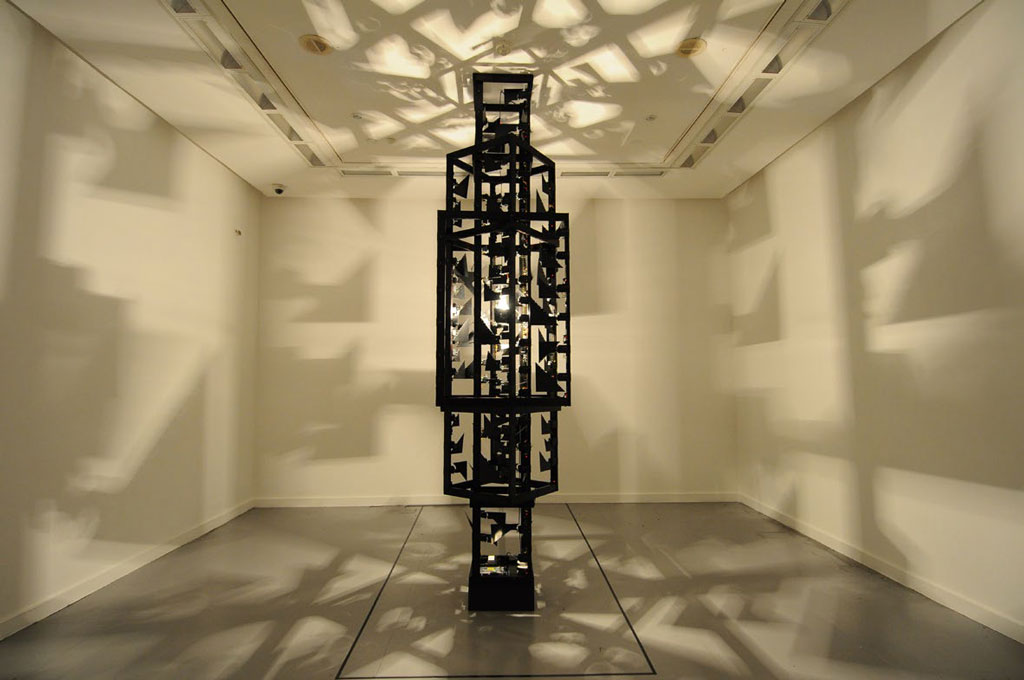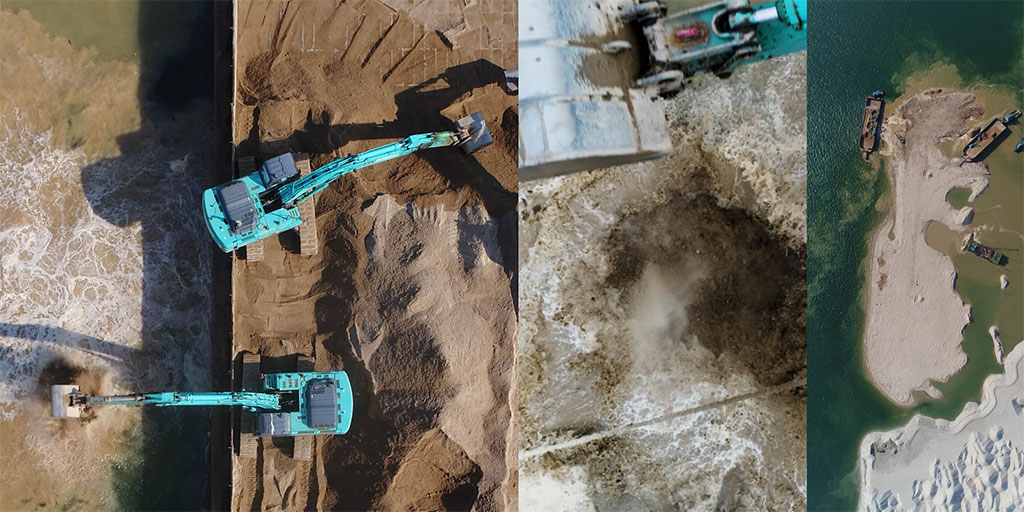ART CITIES:Hong Kong-They Do Not Understand Each Other
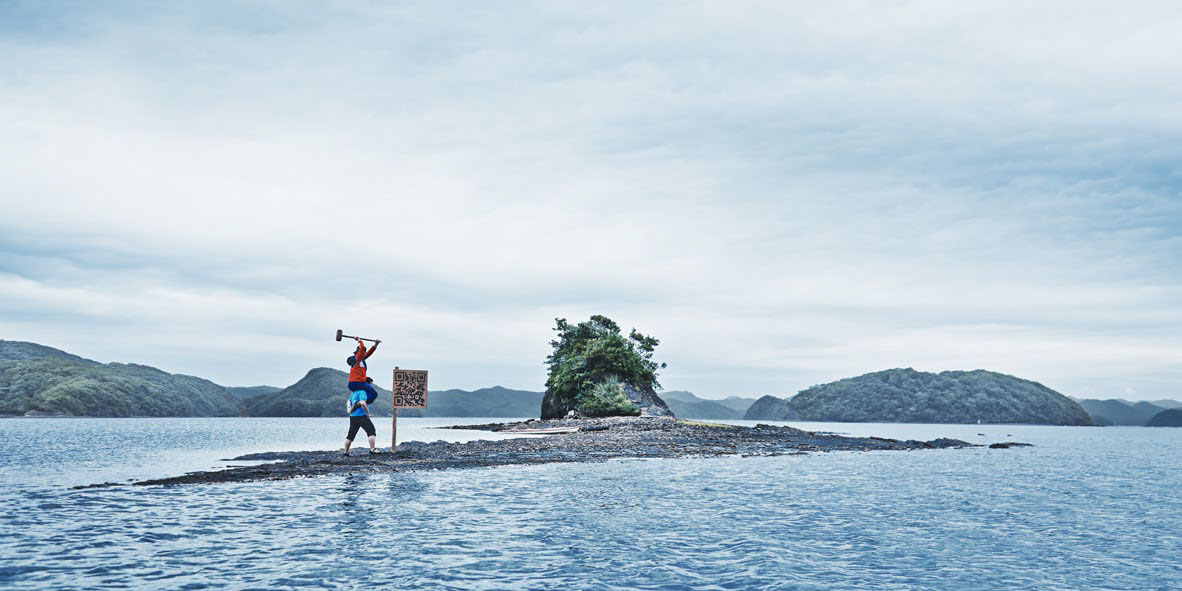 The exhibition “They Do Not Understand Each Other” brings into dialogue commissions and artworks from the collections of the National Museum of Art, Osaka (NMAO) and Singapore Art Museum (SAM) which consider the negotiations and expectations of culture. After all, if the premise of culture is representation, then the promise of cultural exchange, as one might reasonably suppose, is understanding.
The exhibition “They Do Not Understand Each Other” brings into dialogue commissions and artworks from the collections of the National Museum of Art, Osaka (NMAO) and Singapore Art Museum (SAM) which consider the negotiations and expectations of culture. After all, if the premise of culture is representation, then the promise of cultural exchange, as one might reasonably suppose, is understanding.
By Dimitris Lempesis
Photo: Tai Kwun Contemporary Archive
Through the artworks of “They Do Not Understand Each Other” a range of connections, and thus the possibilities of understanding, are manifest, in various forms as well as intensities. They speak to boundaries, borders, gaps, spaces, surfaces, interfaces, and divisions that exist because of—for lack of a better word—an unevenness in encounters between individuals, peoples, and things. Such unevenness is inevitable, and from this unevenness, curiosity in the unfamiliar and the new springs forth, as well as the impulse to discover. In fact, one might even say that cultural experience is couched upon this encounter and the disclosure that follows.
On a disputed island between the Korean peninsula and the Japanese archipelago, two men (one Japanese and the other Korean) find themselves marooned on this hapless stretch of land. Despite not understanding the words uttered by one another, they are somehow able to collaborate, thanks to their patience and good humour. With the Japanese man sitting balanced atop the Korean man’s shoulders, they together attempt to drive a post bearing nothing but a QR code into the sand. For the artwork They Do Not Understand Each Other”, Tsubasa Kato employed the surrealist technique of “exquisite corpse”, whereby a narrative is composed through the fragmented contributions of different participants with none having knowledge of what has already been said. The resulting non-linear work forms a satirical remark on the incommensurability and fabricated nature of nationhood, as the two men are made to temporarily set aside inherited belief systems in order to achieve their shared goals. Within the gaps of communication they discover that empathy may be the best means of overcoming boundaries.
Trained in the tradition of Japanese ink painting, Kumi Machida reinterprets recognisable pop cultural icons in the austere lines of the ink brush. With an infallible hand, all at once her supple and tense strokes exude the antithetical and often contradictory emotions of kindness and coldness, intimacy and alienation. From these simple lines Machida has created countless works, more recently applying this technique to the human form. With no sign of the snow mentioned in the title “Snow Day” evokes the viewer’s imagination. A biomorphic, childlike character gazes down at something removed from the breast pocket of a shirt with nothing visibly inscribed upon it. Encapsulated in this moment, Machida touches upon an innate anxiety espoused by our present modes of communication. In her typically muted tones, the only color represented in the composition is in the figure’s eyes whose rendering in red has made the downward glance of the figure seemingly and mysteriously significant.
The inspiration for the kinetic sculpture “Not Quite A Total Eclipse” came from an earlier work by Wit Pimkanchanapong titled “My-ya-rab” (2009), the name of a species of mimosa plant that responds to touch in a temporary folding of its leaves. Observing the shadows that the rhythmically moving fins of the artwork had cast during an evening installation at Bangkok Art and Culture Centre, Wit Pimkanchanapong endeavoured to recreate this effect mechanically and in reference to the astronomical event of an eclipse. A total eclipse occurs when the moon covers the sun, in a moment of celestial obscuration that has historically been cause for great fascination, anticipation, and fear, with numerous myths and beliefs associated with this disappearance of the sun from one’s view. Even as scientists and astronomers have since debunked claims of omens and superstition, nevertheless, in experiencing an eclipse, a feeling of mystery and awe remains. In Pimkanchanapong’s artwork, the shadow created is produced mechanically; the chatter of the whirring blades reminds one of that. Yet its mechanism may not be so different from that of a cosmic occurrence, in that the light experienced varies with motion over time—until, unexpectedly, a moment of alignment occurs.
Filmed on the coast of Vietnam, “Memorial Project Nha Trang, Vietnam: Towards the Complex—For the Courageous, the Curious and the Cowards” is an early video work by Jun Nguyen-Hatsushiba, who is of Japanese and Vietnamese descent. It is also his first underwater work—though the ideas and visual concept may be said to have emerged in earlier installations: of suspended nets and oars in “Memorial for the Courageous” (1997) in Hanoi, and of mosquito nets in “Water in the Sky” (1998) in Ho Chi Minh City, with both installations viewed from below. Commissioned by the Yokohama Triennale in 2001, the artist had already been tracing the history of the cyclo (or rickshaw) and interviewing cyclo drivers. Noticing that the cyclo had not transformed much in shape and design over the years, its form was to become, within this new film, a reference to unchanging and ever-present pasts. The underwater performance by fishermen struggling to pull the cyclos across a seabed presents a vivid and empathetic recollection of the “boat people”* of Vietnam, striving to find new futures across uncertain waters. Also surfacing palpably within the film is the fight for breath, particularly as the cyclos are pulled deeper into the sea. For the “boat people”, however, returning to shore was not an option. To survive, they had to venture forward, even if it meant further into the unknown and, perhaps, the new.
“McDonald’s Radio University” is a roving lecture program that takes place at various branches of McDonald’s fast food restaurants or their replicas around the world. Initiated by the artist and theatre director Akira Takayama, the project thinks through the restaurant chain’s democratic potential as an oasis for individuals living on the margins of society—often literally, for instance tolerating refugees to stay and meet up at restaurants, despite McDonald’s being a for-profit enterprise. The restaurants thus serve as a haven and meeting place for those lacking a secure space. For the lecture series, Takayama has invited a group of “professors” (all individuals considered to be “refugees” or “migrants” in their host countries) to engage in a collaborative process of writing and composing scripts based on their life experiences. Visitors may scan a QR code on the syllabus in order to stream the lectures on their mobile phones. The work serves to highlight the experiences and narratives of those considered to be “others” within mainstream culture, and explores liminal spaces, both public and private, that unite different strata of society.
A member of the spirited Japanese postwar avant-garde Gutai group, Kazuo Shiraga continuously experimented with painting using all parts of his body. Inspired by the gestures of American Abstract Expressionists, Shiraga began by gradually pushing oil paint with his fingers to create patterns; then, finding that vertical canvases had the tendency to drip, began laying out compositions on the floor. With larger canvases, he had no choice but to walk on to them and started to paint with his feet, fashioning a unique apparatus for self-suspension from the ceiling with a rope in order to prevent himself from slipping. Members of the Gutai movement were known for rejecting traditional styles in favour of performative immediacy, exploring the role of matter and the body in achieving originality. The works “Chishousei Kakoko” and “Chikeisei Soutoki” from the “Water Margin” series, named after one of the heroes of the Chinese classical novel Water Margin, a favourite of Shiraga’s, features the artist’s iconic wild and aggressive bodily strokes.
Participating Artists: Saori Akutagawa (Madokoro), Jennifer Allora & Guillermo Calzadilla, Agnes Arellano, chi too, Heman Chong, Chua Chye Teck, Ho Tzu Nyen, Sojung Jun, Tsubasa Kato, Charles Lim, Kumi Machida, Jun Nguyen-Hatsushiba, Wit Pimkanchanapong, Kohei Sekigawa, Kazuo Shiraga, Akira Takayama, Than Sok, Ming Wong.
*Vietnamese boat people also known simply as boat people, were refugees who fled Vietnam by boat and ship following the end of the Vietnam War in 1975. This migration was at its highest in 1978 and 1979, but continued through the early 1990s. The term is also often used generically to refer to all the Vietnamese who left their country by any means between 1975 and 1995.
Info: Curators: Yuka Uematsu and June Yap, Tai Kwun Contemporary, 10 Hollywood Road, Central, Hong Kong, Duration: 25/5-13/9/20, Days & Hours: Daily 10:00-23:00, www.taikwun.hk
